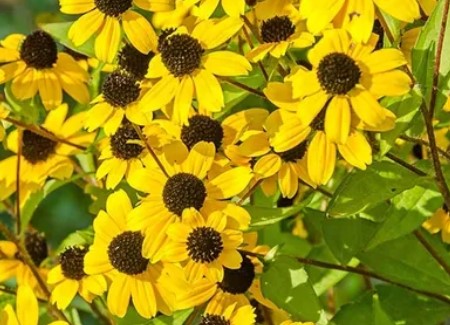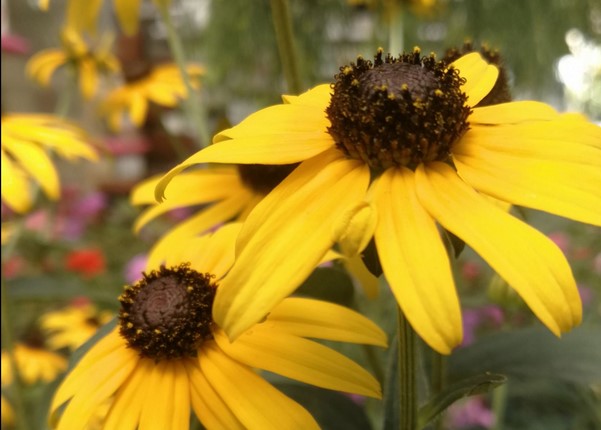Brown-Eyed Susan
Rudbeckia triloba


Characteristics
- Type: Perennial
- Zone: 3 – 9
- Height: 2 – 5 Feet
- Spread: 2 – 3 Feet
- Blooms: July – October (Showy)
- Bloom: Yellow Rays with Brown-Purple Center Disk
- Sun: Full Sun
- Water: Medium
- Maintenance: Low
- Suggested Use: Naturalize
- Tolerate: Deer, Drought
- Attracts: Bees, Butterflies, Birds
Culture
While it prefers moderate moisture, Brown-eyed Susan tolerates most conditions, including drought, once it is established. A short-lived perennial, it self-seeds readily and flowers in its second year. Because it is such a profuse self-seeder, it may overwhelm small landscapes so is not recommended in a wildflower garden. Maroon stems support abundant bright yellow flowers which are flat, one to two inches across, with jet black centers that fade to brown. Blooming from late summer until hard frost, Brown-eyed Susan reaches two to five feet tall and becomes bushy if not crowded by other plants. It makes an excellent cut flower and complements any of the tall native grasses and common prairie wildflowers.
Noteworthy Characteristics
Rudbeckia triloba is covered with flowers when in bloom. The name “triloba” comes from the dark green, somewhat hairy basal leaves that are divided into three oval parts. This plant is similar to the very common black-eyed Susan (R. hirta), but is taller, flowers later and over a longer period of time and has much smaller flowers. Masses of yellow daisies with brown centers make this a late-season garden standout. Plants burst into bloom in late summer through fall, or until a hard frost. They produce abundant small (1-2″ across), flat, brilliant yellow flowers with button-shaped jet-black centers that fade to brown. The 8-10 ray flowers are proportionally shorter and wider than those of other coneflowers.
Problems
No known insect or disease problems. May need support if grown in a shaded site.
Garden Uses
Mass Plantings. Perennial border or naturalizing in the low-maintenance garden. Excellent cut flower.